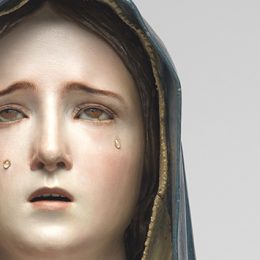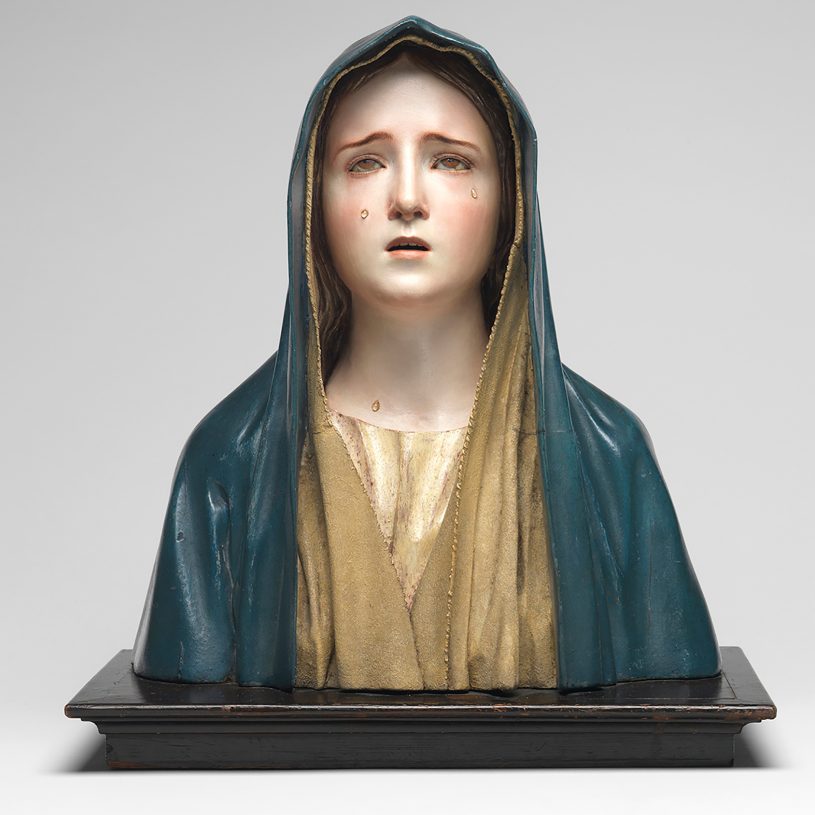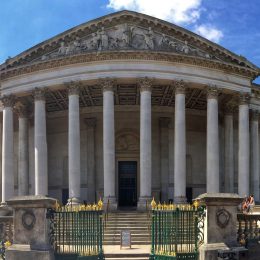Exploring the world of art, history, science and literature. Through Religion

Welcome to TreasureQuest!
Look through the treasures and answer the questions. You’ll collect jewels and for each level reached, earn certificates.
How far will you go?
You need an adult’s permission to join. Or play the game without joining, but you’ll not be able to save your progress.
Latin for ‘Sorrowful Mother’, the statue was produced as devotional aid: an object that would inspire people in their prayers.






Are there links to current religious practices or a modern equivalent?
Christians have often disagreed about art: in the eighth and ninth centuries, many Christians in the Byzantine Empire turned against images in churches, as they were worried it might lead to idolatry: the worship of material things rather than God. In contrast, the Roman Catholic Church became even more committed to religious art, as a way to make religious belief more real.
Parish churches in the Church of England will look different inside according to which side of those arguments they identify with: some are more colourful, and filled with art, if they align with the catholic heritage of the Church of England, while others are more austere, or full of everyday things, if they align more with the Protestant aspect of the same church.

Where is it from, where is it now?

Websites
A guide to the Fitzwilliam’s latest acquisition
This is a news article about the sculpture, just after it was acquired by the gallery. There was a good deal of excitement and drama as people waited to see if the University would raise the money needed to buy it, and keep it accessible to the public, rather than in private hands.
Stabat Mater
To read about Mary’s grief in poetic form, see the Stabat Mater. It is attributed to Jacopone da Todi. Here is a translation by Edward Caswell.
Videos
Sacred Made Real (Washington)
During the exhibition “Spanish Painting and Sculpture of 1600-1700”, TriVision Studios was approached by PBS to help create and produce an HD promotional campaign video around the exhibit. The video was well received on television as well as online, as the exhibition drew thousands of people to the National Art Museum.











 Faculty of Divinity
Faculty of Divinity